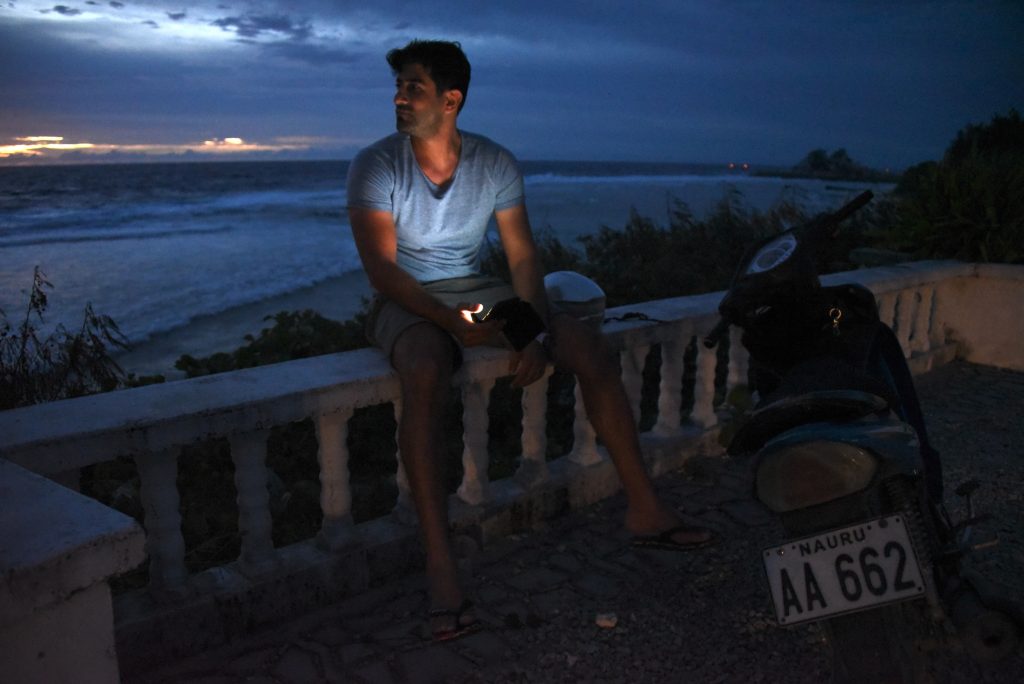
NAURU
Among all 193 UN member states Nauru was for me the most difficult to get into. I emailed, I called so many times, to no avail. l started to wonder why they quite obviously did not want me to visit. Eventually they were not suffering from overtourism. At the end I got my entry permit thanks to a friend who knew somebody who knew somebody who could help me. At least Nauru immigration was so kind not to charge me 8000 AUD (the equivalent of 5000 USD). That’s the regular price for a „media visa“, non refundable in case of denial, of course (http://naurugov.nr).
In the 70s Nauru and its just around 10000 citizens were damn rich, thanks to phosphate mining as main source of income and high phosphate prices. Stories of Nauruans’ long-gone high life still abound, with Nauruans on shopping sprees around half the world. At that time getting to Nauru had been easy thanks to ample flight connections to the US, Asia and Australia. When I visited there were just two flights a week, one from Majuro on the Marshall Islands and one from Brisbane. Getting around Nauru was not easy neither. Since there were no taxis at all and no rental cars I had to walk. Despite the small size of the island this was not a cakewalk. With most of the former mines defunct and (almost) no tourst in sight, Nauruans substituted their shopping fancy with other hobbies: Martial arts (preferably in clubs called „Panzer“) and drilling fierce fighting dogs. I seemed to be their favourite prey, nobody seemed to care.
It came as a godsend when Australia (I only briefly allowed myself to think about partners sharing common values…) was looking for an offshore immigration detention facility to deter asylum seekers from maritime arrivals in Australia proper. In the framework of this “Pacific Solution“ asylum seekers are transferred to detention centres on island nations in the Pacific Ocean, rather than allowing them to land on the Australian mainland. The location was found in Nauru, the center opened in 2001, Nauru was finally affluent again thanks to the Australian taxpayer.
When I was visiting Nauru in 2019 I thought I was prepared. I had read „Inside Nauru – the Undesirables“. But nothing prepared me for the emotional challenge to meet the „Undesirables“ in person. While I was free to roam around the whole world, the detainees were only free to roam around the tiny island of Nauru which is a only third of the size of Manhattan. The sun was setting, kids were playing football on the little beach, others were playing with the waves. Next to me Bilal was watching the sunset, facing west. He had left his village not far from Lahore in Pakistan, after his entire family had contributed to raise 6000 US Dollar for his dangerous voyage from Pakistan via Indonesia to finally arrive with the help of human traffickers by boat in Australia. He never had a chance to set a foot into Australia but was immediately transferred to Nauru. Of course, the Australian government offered him to sponsor his return flight back to Pakistan. How he could go back, he was asking my with a low voice, with nothing in hand, with so much money spent for nothing, with so many broken dreams? I had read reports of suicidal behaviour and resignation syndrome among detainees in Nauru. But Bilal told me a more personal story: His friend, also hailing from Pakistan, who had also been for almost six years detained on Nauru, had killed himself just a few weeks ago. One of my saddest travel moments.
